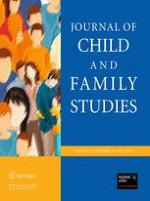01-04-2013 | Original Paper
Exploring Narcissism, Psychopathy, and Machiavellianism in Youth: Examination of Associations with Antisocial Behavior and Aggression
Gepubliceerd in: Journal of Child and Family Studies | Uitgave 3/2013
Log in om toegang te krijgenAbstract
We sought to explore the differential associations of callous–unemotional (CU) traits, narcissistic traits, and Machiavellian traits with overt aggression, relational aggression, delinquency, behavioral dysregulation, and emotional dysregulation in a community sample of boys and girls (ages 11–17). Results indicated that the three personality traits were significantly correlated with each other, yet distinct. CU traits, narcissistic traits, and Machiavellian traits demonstrated different unique associations with behavior problems. Specifically, narcissistic traits showed the strongest unique associations with overt aggression, relational aggression, behavioral dysregulation, and emotional dysregulation. CU traits showed the second strongest unique associations with overt aggression, delinquency and behavioral dysregulation, but were not associated with relational aggression or emotional dysregulation. Lastly, Machiavellian traits showed a strong unique association with emotional dysregulation, but were not uniquely associated with externalizing behavior problems. These findings have implications for intervention with aggressive and antisocial youth.
